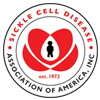Trusted Resources: Evidence & Education
Scientific literature and patient education texts
Transfusion-Induced iron overload
source: Medscape
year: 2020
authors: Muhammad A Mir
summary/abstract:The human body has no active mechanism for the excretion of iron. During normal physiology, the amount of iron absorbed from the small intestine (1-2 mg/d) is balanced by the iron lost through sloughing of intestinal mucosa and skin, as well as the small amounts excreted in the urine and bile. Day-to-day iron requirements, as iron is needed by virtually all body cells and especially erythrocytes, are met by recycling between various compartments.
A unit of transfused blood contains approximately 250 mg of iron. In patients who receive numerous transfusions—notably those with thalassemia major, sickle cell disease, myelodysplastic syndrome, aplastic anemia, hemolytic anemia, and refractory sideroblastic anemias, who may become transfusion dependent—the excess iron from the transfused erythrocytes gradually accumulates in various tissues, causing morbidity and mortality.
Iron chelation therapy is used to prevent the accumulation of iron to harmful levels. Liver and cardiac transplantation should be considered for appropriate patients with end-stage disease.
Related Content
-
The effects of pain-related anxiety on hypnosis treatment responses in adults with and without sickle cell diseasePain is the most common symptom in sickl...
-
What’s Inside My Medicine Cabinet?Living with sickle cell disease, I rely ...
-
Therapeutic phlebotomy is safe in children with sickle cell anaemia and can be effective treatment for transfusional...Serial phlebotomy was performed on sixty...
-
Isaac Singleton: Sickle Cell Freehttps://www.youtube.com/watch?v=a5mMgnuz...
-
Jennifer Doudna on ethics of gene editinghttps://www.youtube.com/watch?v=8Ijr1ccY...
-
Researchers Develop Effective Treatment for Sickle Cell Anemiahttps://www.youtube.com/watch?v=7zceTJzH...
-
Bluebird bio acquires Durham, NC, manufacturing site for lentiviral vector productionbluebird bio said today it has acquired ...
To improve your experience on this site, we use cookies. This includes cookies essential for the basic functioning of our website, cookies for analytics purposes, and cookies enabling us to personalize site content. By clicking on 'Accept' or any content on this site, you agree that cookies can be placed. You may adjust your browser's cookie settings to suit your preferences. More Information
The cookie settings on this website are set to "allow cookies" to give you the best browsing experience possible. If you continue to use this website without changing your cookie settings or you click "Accept" below then you are consenting to this.




 +myBinder
+myBinder
